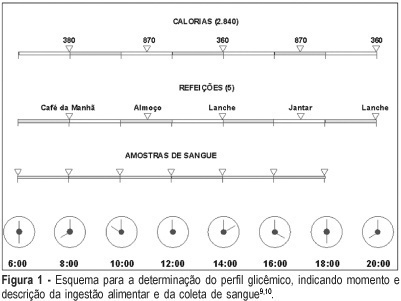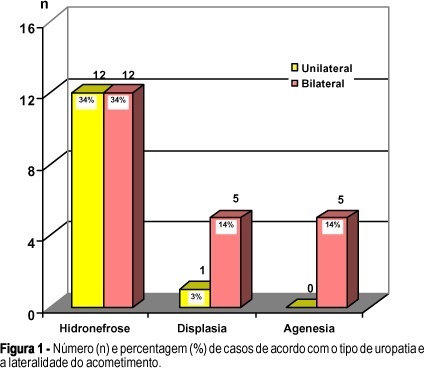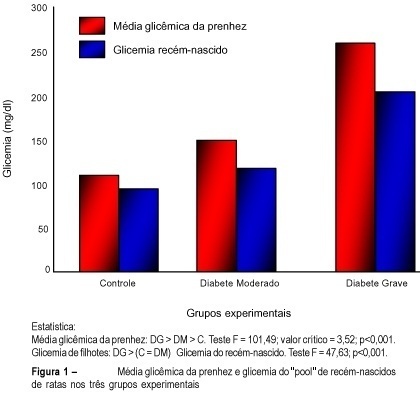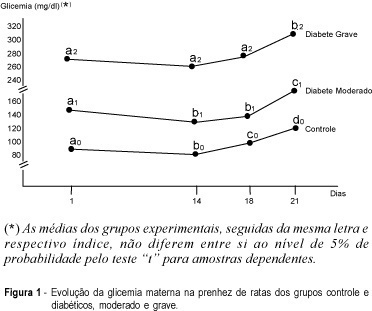You searched for:"Iracema de Mattos Paranhos Calderon"
We found (21) results for your search.Summary
Rev Bras Ginecol Obstet. 2005;27(11):691-697
DOI 10.1590/S0100-72032005001100010
This is both a synthesis and a review of the major research findings, with the aim of validating Rudge's group IB. In this group of pregnants, screening for gestational diabetes was positive while the diagnosis was negative (normal 100 g-oral glucose tolerance test 100 g-OGTT). Nonetheless, the variations in glucose levels observed throughout the day, and confirmed by the glycemic profile (GP), characterized diurnal hyperglycemia, which accounts for maternal risk and adverse perinatal outcome. The description of this group is unique for both the establishment of the diagnosis during gestation and the follow-up of both the mother and the infant. These pregnancies have been erroneously classified as "low risk" and have not been diagnosed or treated. The IB group corresponds to 13.8% of the pregnant women screened in our service. This rate, added to the 7% of pregnancies complicated by diabetes, increase the occurrence of hyperglycemic disorders during gestation to up to 20.0%. In Rudge's group IB: a) perinatal mortality rate is 41‰, which is similar to that observed among diabetic pregnant women and 10 times higher than that found among non-diabetics; b) the observed placental abnormalities (both morphological and functional) differed from those seen in non-diabetic and diabetic pregnant women, indicating an adjustment to maintain functional activities that facilitated the passage of glucose to the fetus and explained fetal macrosomia (53.8% in non-treated pregnancies); c) maternal risk for hypertension, obesity and hyperglycemia was high and seemed to reproduce a model of metabolic syndrome, favoring the potential risk for future diabetes; d) 10 years after the index-pregnancy, type 2 diabetes was confirmed in 16.7% of the women in group IB. The authors suggest the development of multicentric studies in order to identify biomarkers specific for Rudge's group IB and establish protocols for the diagnosis of gestational hyperglycemic disorders using the combination GP + 100g-GTT as a standard. This procedure may cause an impact on the morbidity/mortality rate among pregnancies complicated by diurnal hyperglycemia.

Summary
Rev Bras Ginecol Obstet. 2005;27(12):709-711
Summary
Rev Bras Ginecol Obstet. 2003;25(10):725-730
DOI 10.1590/S0100-72032003001000005
PURPOSE: to evaluate the perinatal outcome of fetuses with congenital anomalies of the urinary tract. METHODS: we reviewed the perinatal outcome of 35 fetuses with congenital anomalies of the urinary tract. The following characteristics related to the uropathy were analyzed: type (hydronephrosis, dysplasia and renal agenesis), side of lesion (bilateral or unilateral), and level of the obstruction (high or low, in hydronephrosis). The perinatal outcome was evaluated according to these characteristics. The data were analyzed by the c² test and by the exact Fisher test. The level of significance was 0.05. RESULTS: the incidence of hydronephrosis was 68.6%. Half of the fetuses had unilateral hydronephrosis. Renal dysplasia occurred in 17.1% of the cases; 83.3% of these were bilateral and 16.7%, unilateral. The incidence of renal agenesis was 14.3%, all bilateral. The fetuses with dysplasia/agenesis had a 91% incidence of oligohydramnios, preterm birth, low birth weight, and death. In the group with bilateral disease the presence of oligohydramnios, preterm birth, low birth weight, death, urinary tract infections, and the need of hospitalization for a period greater than 7 days was significant when compared to the group with unilateral disease. The need of hospitalization for a period greater than 7 days in patients with low obstruction was significantly higher when compared to the patients with high obstruction. CONCLUSIONS: hydronephrosis, bilateral disease, and lower obstruction were the most frequent uropathies. The dysplasia/agenesis group had a worse prognosis when compared with the hydronephrosis group. Bilateral disease had a worse prognosis when compared with the unilateral disease group. In the low obstruction group, the need for a period of hospitalization greater than seven days was higher than in the high obstruction group.

Summary
Rev Bras Ginecol Obstet. 2001;23(1):9-14
DOI 10.1590/S0100-72032001000100002
Purpose: to evaluate the effects of maternal diabetes on the fetal lung phospholipid profiles of rats with moderate and severe diabetes measuring lecithin (L), sphingomyelin (S), phosphatidyl-glycerol (PG), phosphatidyl-inositol (PI), and the relationships between L/S and PG/PI. Methods: fifty-four mature Wistar rats were submitted to experimental diabetes and pregnancy¹. Diabetes was induced by alloxan (42 mg/kg of weight, iv) and three groups were formed: control; moderate diabetes (MD), with glycemia levels between 120 and 200 mg/dl, and severe diabetes (SD), with glycemia levels higher than 200 mg/dl. On the 21st day, cesarian section was performed, and the fetal lungs were macerated and pooled. The phospholipids were measured by unidirectional thin-layer chromatography. Results: 1) the fetal lungs of the rats with moderate diabetes showed higher weight (0.159 g) and lower concentration of PG (3.0 µg/ml) and PI (3.4 µg/ml) than the controls, and the same relationship between L/S (2.2) and PG/PI (2.0). The fetal lungs of the rats with severe diabetes showed lower weight (0.145 g), the same values of L/S (1.9) and PG/PI (2.1), and lower PI (5.1 µg/ml) value than the controls. Conclusions: 1) the pulmonary maturity retardation in the pups of rats with moderate diabetes is explained by the higher pulmonary weight associated with lower concentration of PG and PI; 2) the pulmonary maturity acceleration in the pups of rats with severe diabetes is explained by the lower pulmonary weight associated with the same concentration of PG and PI.

Summary
Rev Bras Ginecol Obstet. 1999;21(2):91-98
DOI 10.1590/S0100-72031999000200006
Purpose: placental alterations were evaluated in macrosomatia and fetal growth retardation in pregnancy complicated by diabetes. Three groups of rats, used as experimental models, were studied: control, moderate and severe diabetes. Material and Method: cesarian sections were carried out on the 18th or 21st day of pregnancy. Maternal and fetal glycemia, newborn weight, placental weight, relationship between placental and fetal weight, DNA, RNA and protein contents and the glycogen deposited on placental membranes were analyzed. Results: there was a higher number of macrosomic newborns in the moderate diabetes group, whose placentas were rich in DNA with progressive decrease of glycogen in their membranes towards the end of pregnancy. There was a predominance of small for date newborns in the severe diabetes group. Their placentas showed a small DNA proportion, an increase in RNA synthesis and a tendency to higher protein production, with no change in the glycogen deposit. Conclusions: we conclude that fetal growth deviation in moderate and severe maternal diabetes between the 18th and 21st days of pregnancy is related to several placental alterations. In the moderate form there were only cellular hyperplasia and disappearance of placental glycogen at the end of pregnancy. In the severe diabetes group there was thickening of maternal-fetal membranes during this period. There was cellular hyperplasia and hypertrophy associated with the maintenance of glycogen reserves in the placental membranes.
